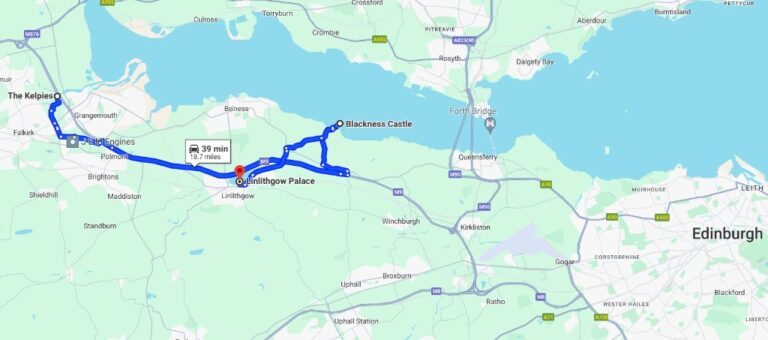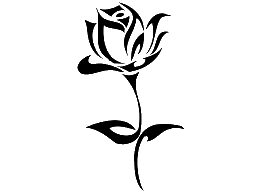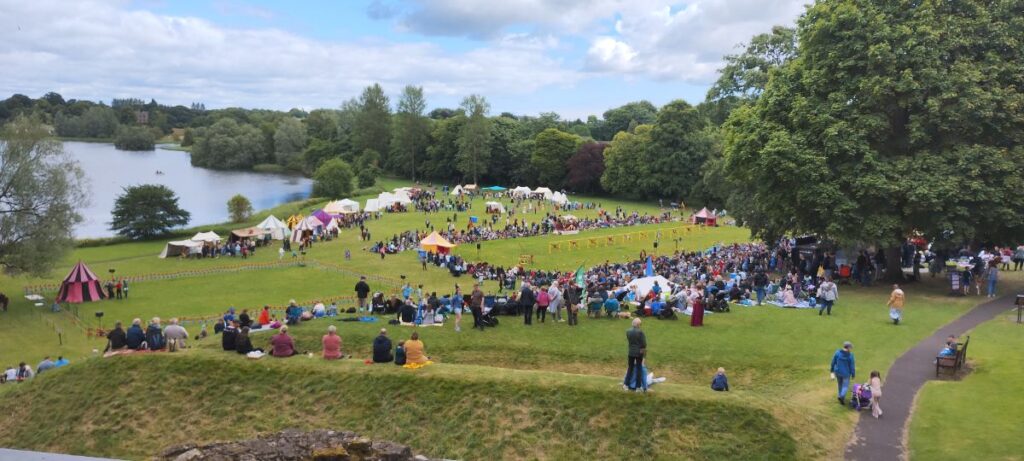Bannockburn House, where we have spent the last week digging up the Scottish countryside, is only about 20 minutes away from Linlithgow Palace where they are about to hold a jousting competition. Sounds like it has to be done! I mean watching the joust, not competing in the joust (I prefer my transportation to come with an on/off switch and controls that work – the four-legged variety of transport meets none of these requirements).
The photo at the top of this post shows the jousting field on the right side (the rectangular area with no people in it), and a special events field on the left side (the empty area next to the striped tent).
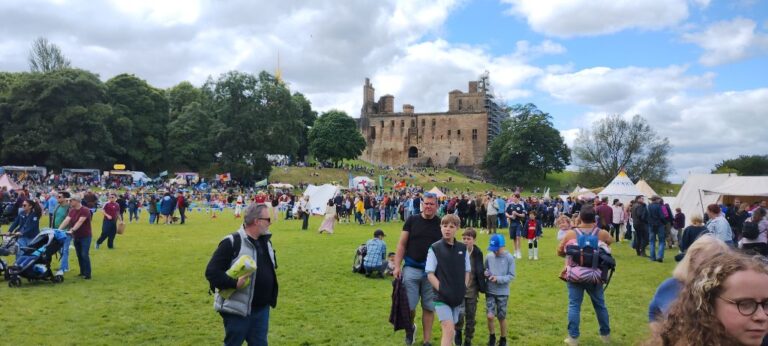
In addition to the jousting competition there are many booths/tents set up which contain people in period costume undertaking medieval tasks such as: black-smithing, fletching (arrow making), baking, etc. There was an area where bards were playing instruments that were made using the same techniques as used in the 15th and 16th centuries. All of the people in costume seemed to be experts in their respective fields and were quite willing to explain how they worked “in the good old days”; emphasis on old, not good (as in life was only good for the rich and noble, and for the average serf was “nasty, brutish and short” according to Thomas Hobbes a 16th century philosopher).
We did have an excellent pizza for lunch, although I don’t think they had high speed pizza ovens (or even pizza) back in the 16th century.
One of the special events was a falconry display. The falconer gave an excellent overview of how nobles used to hunt with birds of prey and had several birds on display. He flew two of the birds, a Kestral and an owl. These birds only flew about 30 feet or so, from a perch to the Falconer’s hand, but it was still fun to watch. The local gulls were quite upset with the presence of the owl and kept swooping down to try to scare the owl off (the owl was having none of that though). The falconer explained that the owl was a predator of gulls and the gulls were trying to drive the owl away as they probably had nests in the area.
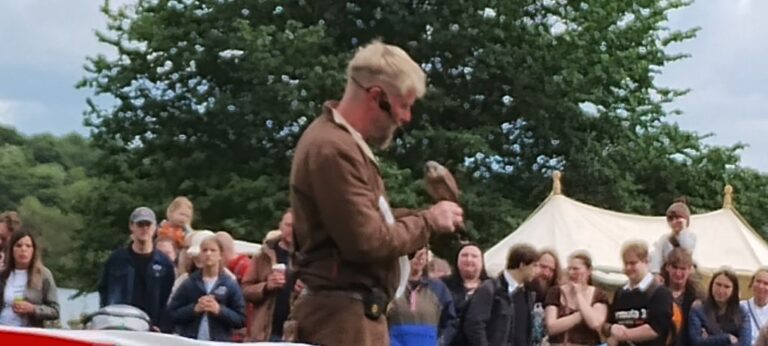
Originally a wooden fort built in 1302, Linlithgow Palace was rebuilt, using stone, by King James I after a fire in 1424. James I also set out to build a Palace instead of a fortified castle. Improvements and additions to the palace continued until the late 16th century. The palace was used a a residence by many Scottish monarchs and Mary Queen of Scots was born at Linlithgow Palace in 1542.
In the late 16th century the palace was little used (the Royal Court had become largely based in England) and eventually fell into ruin. Historical Environment Scotland (a public agency) now maintains the palace and is undertaking ongoing work to stabilize the remaining sections.
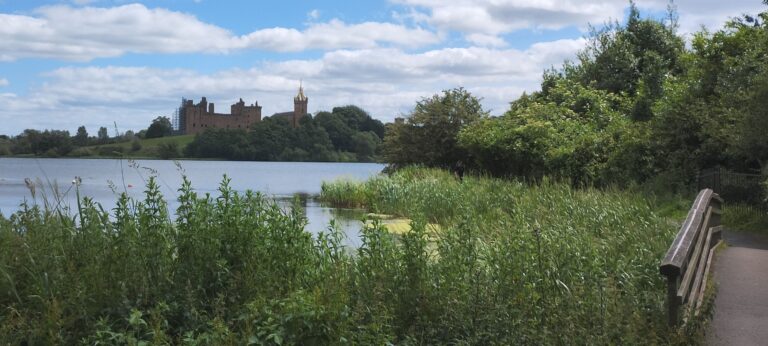
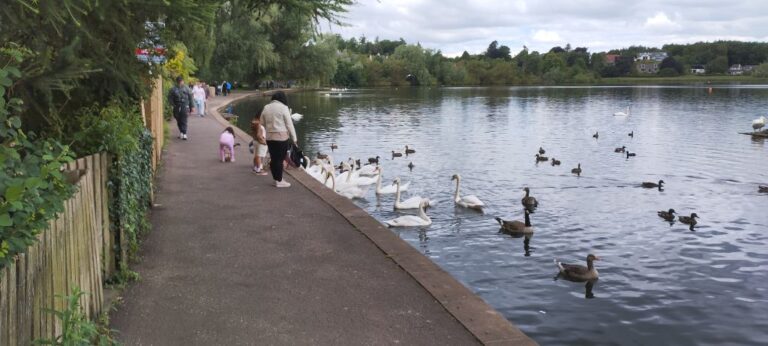
The remaining intact portions of the palace are quite extensive and show the original 5 storey height. It is easy to get lost in the palace remains now, it must have been a maze when fully intact!
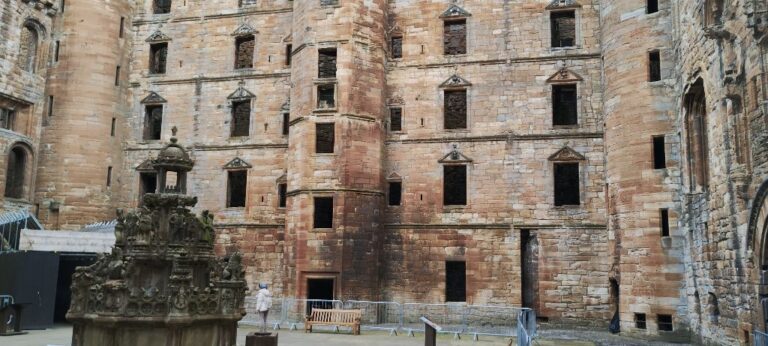
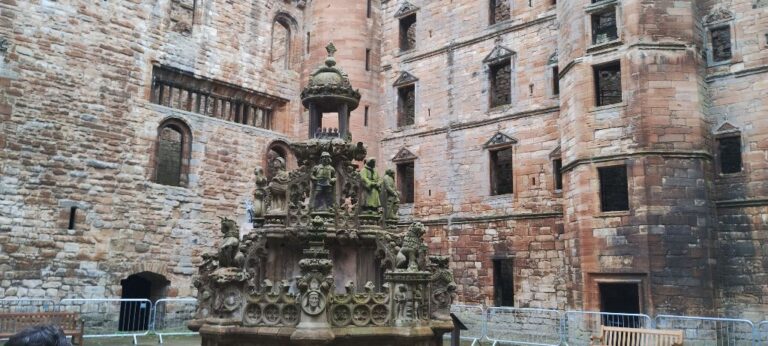
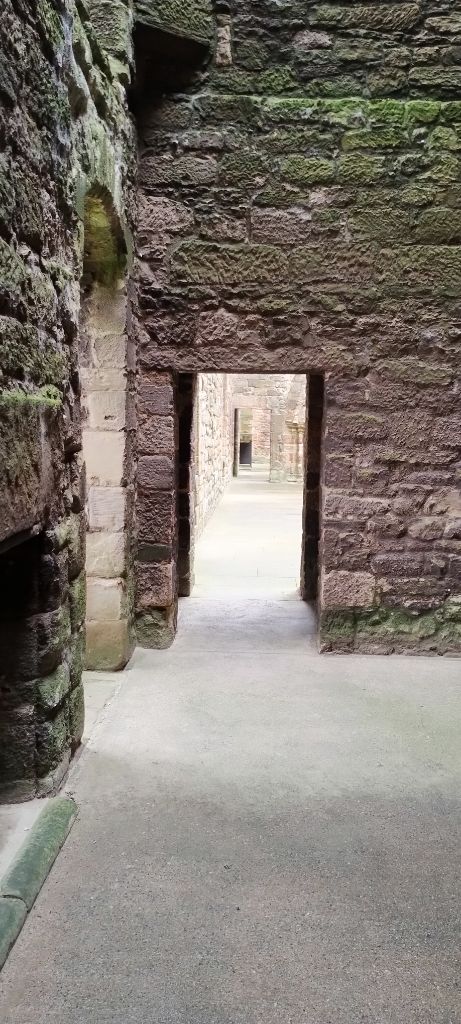
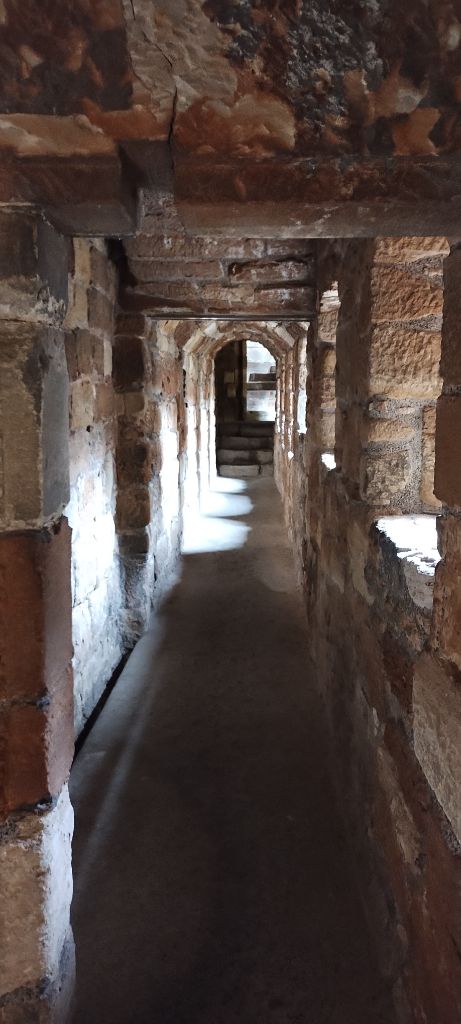
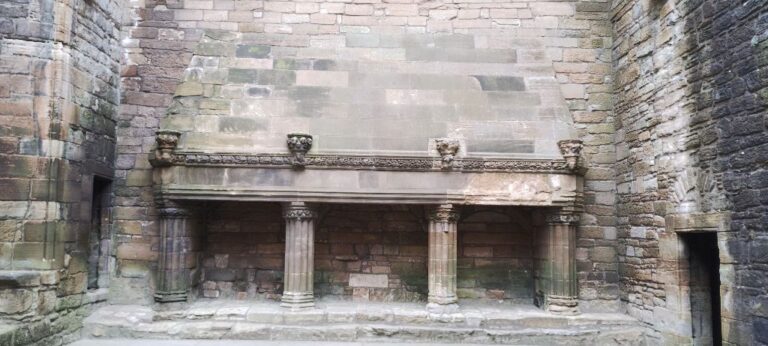
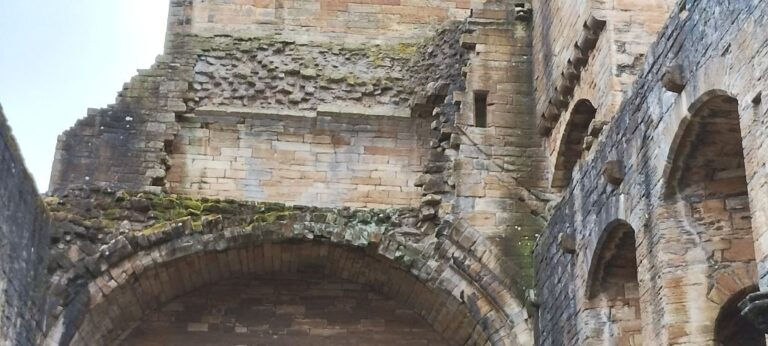
In order to see the jousting and visit Linlithgow Palace we stayed at Loch Farm campground. Not the most scenic of camping spots, but it was on a working farm (which is fun) and was within walking distance of the town and palace.
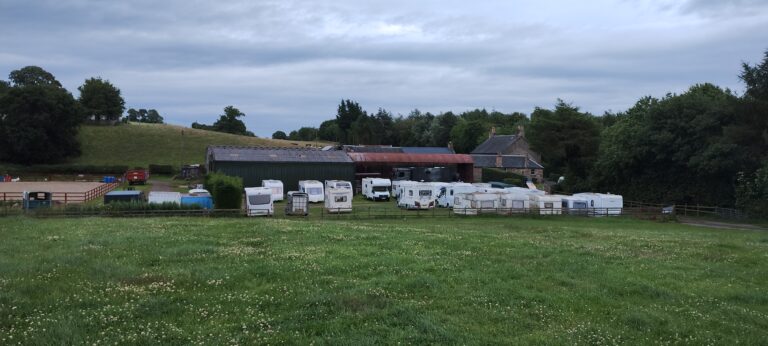
Another bonus for this campground is that it is just under 5 miles away from Blackness Castle. This castle is in a tiny town and the castle itself has little parking (definitely not big enough for Rosie), but it is close enough for us on our e-bikes. The only sketchy bit is some of the roads to the castle don’t have sidewalks or bike lanes, so we are biking on English roads. There is a reason that there are not a lot of bicycles seen on English roads: they are narrow, windy and the speed limits are crazy – 50 mph (mph, not kph) and people drive at the speed limit around blind corners (bicyclists are not expected to be on the roads and are often a surprise to drivers).
We made it to the castle, and back again, without dying (always a good thing).
Whereas Linlithgow Palace was rebuilt as a residence, Blackness Castle was built as a fortress and it shows. No showy entrances and large windows. Just small doors, easily defended, and arrow slots for windows.
Construction started in the 1440’s and was continually upgraded until the 1870’s. Improvements in the mid-16th century made Blackness one of the most advanced artillery fortifications in Scotland.
In addition to a Royal Fortress, the castle has been used as a prison, a troop garrison and an ammunition depot, and was in use until 1912.
The castle was of an unusual design and was known as “the ship that never sailed”. The north and south towers were called the “stem” and the “stern”, while the central tower was known as the “mast”.
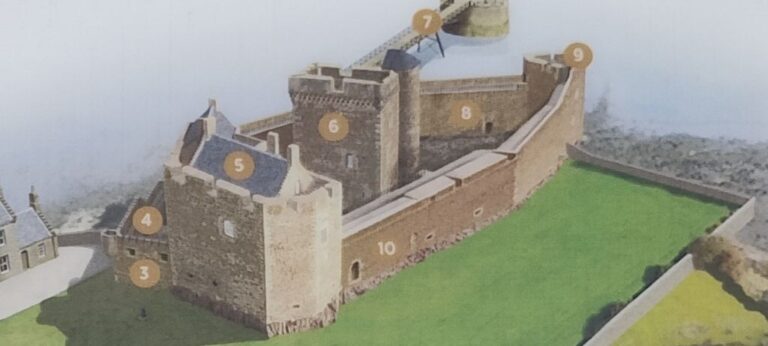
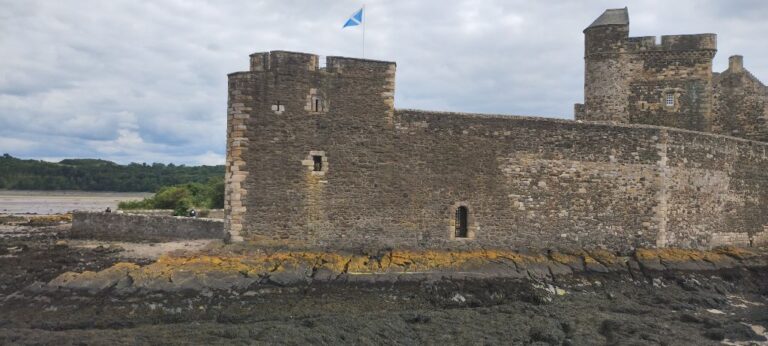
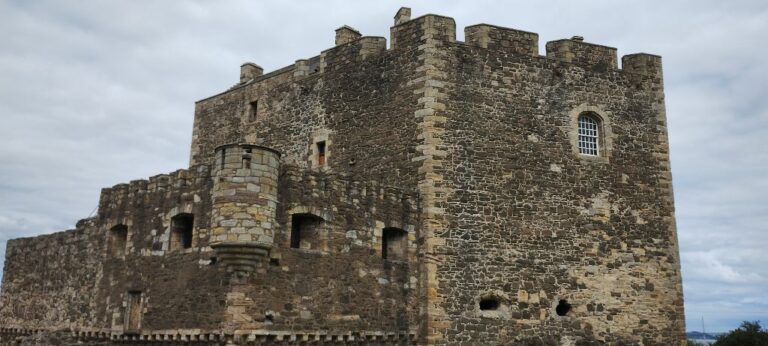
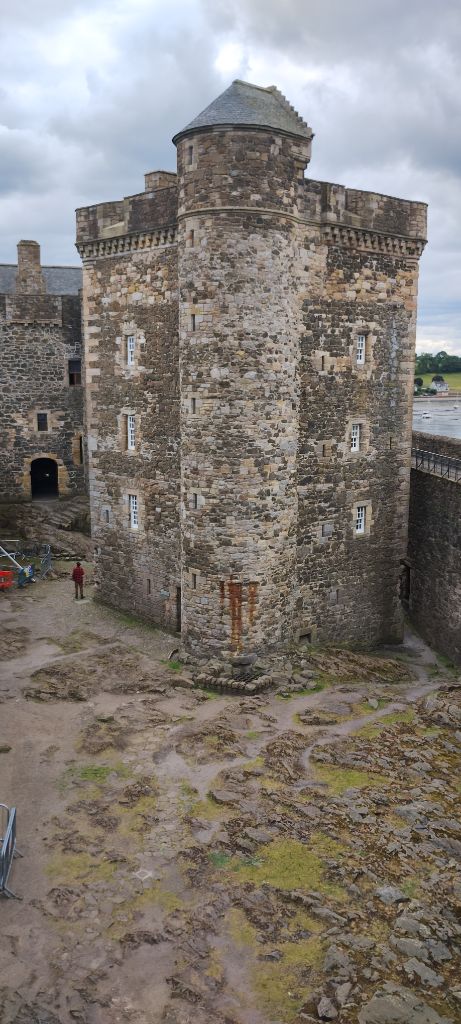
VIP prisoners, like Cardinal Beaton (last Scottish Cardinal prior to the Reformation) and Sir James Kirkcaldy (supporter of Mary Queen of Scots) were locked up within the central tower and had to pay for the pleasure (they had to fund their own food, clothing, etc).
Non-VIP prisoners were kept in a pit located beneath the north tower and were a lot less amenable to ongoing life.
